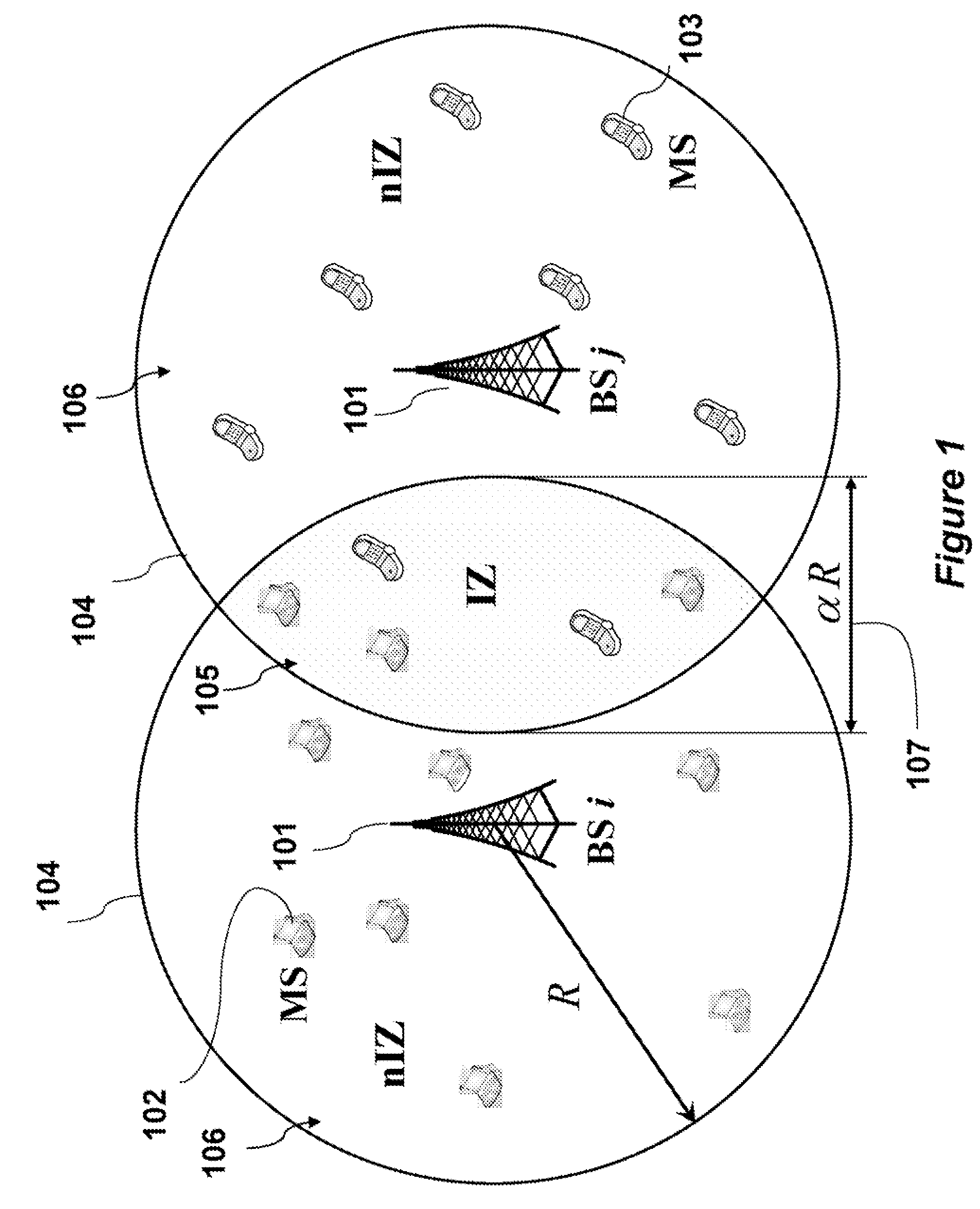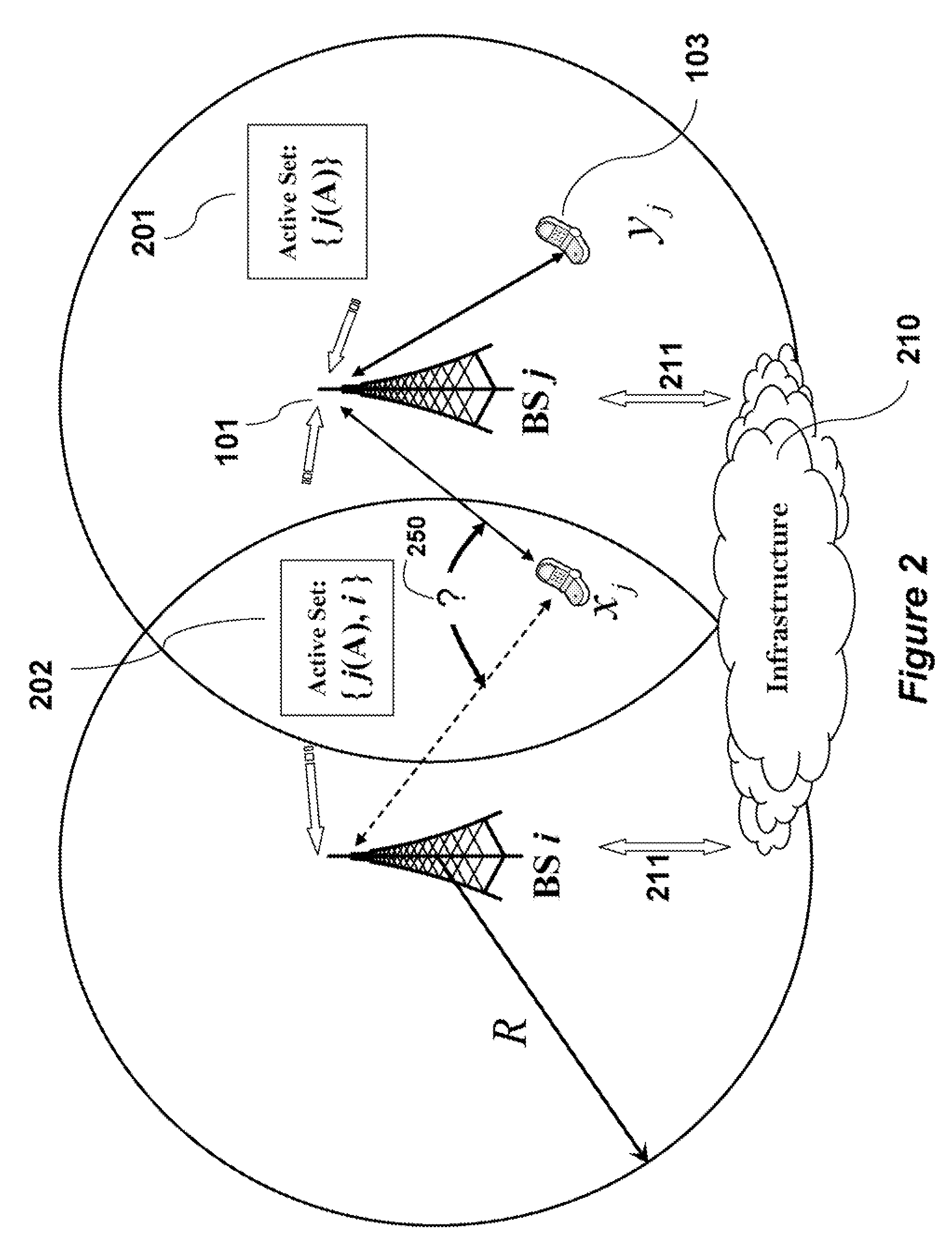Method for Reducing Inter-Cell Interference in Wireless OFDMA Networks
a technology of orthogonal frequency division and wireless network, applied in the field of managing interference in wireless networks, can solve the problems of increasing power consumption, affecting network throughput, and being difficult to schedule in practice, and achieve the effect of reducing subcarrier collisions
- Summary
- Abstract
- Description
- Claims
- Application Information
AI Technical Summary
Benefits of technology
Problems solved by technology
Method used
Image
Examples
Embodiment Construction
[0034]Network Topology
[0035]FIG. 1 shows a wireless OFDMA network according to an embodiment of our invention. The network includes base stations 101, and mobile stations 102-103. The circles 104 approximate the range (R) of the base stations. The coverage area within the range is called a cell. The base stations allocate the subcarriers within its cells. It is understood that in real world networks, the cells need not be circular, and the coverage area may depend on antenna configurations and environmental conditions. We use circles only as a reasonable approximation.
[0036]Mobile stations in a segment where cells intersect can be subject to inter-cell interference. The two cells have an overlapping radius of aR 107. That is, the distance between the two base stations is 2R−αR, where a is some constant dependent on the geographic placement of the base stations.
[0037]Frequency Reuse
[0038]The process for allocating spectrum among adjacent cells is called frequency reuse. When the netw...
PUM
 Login to View More
Login to View More Abstract
Description
Claims
Application Information
 Login to View More
Login to View More - R&D
- Intellectual Property
- Life Sciences
- Materials
- Tech Scout
- Unparalleled Data Quality
- Higher Quality Content
- 60% Fewer Hallucinations
Browse by: Latest US Patents, China's latest patents, Technical Efficacy Thesaurus, Application Domain, Technology Topic, Popular Technical Reports.
© 2025 PatSnap. All rights reserved.Legal|Privacy policy|Modern Slavery Act Transparency Statement|Sitemap|About US| Contact US: help@patsnap.com



